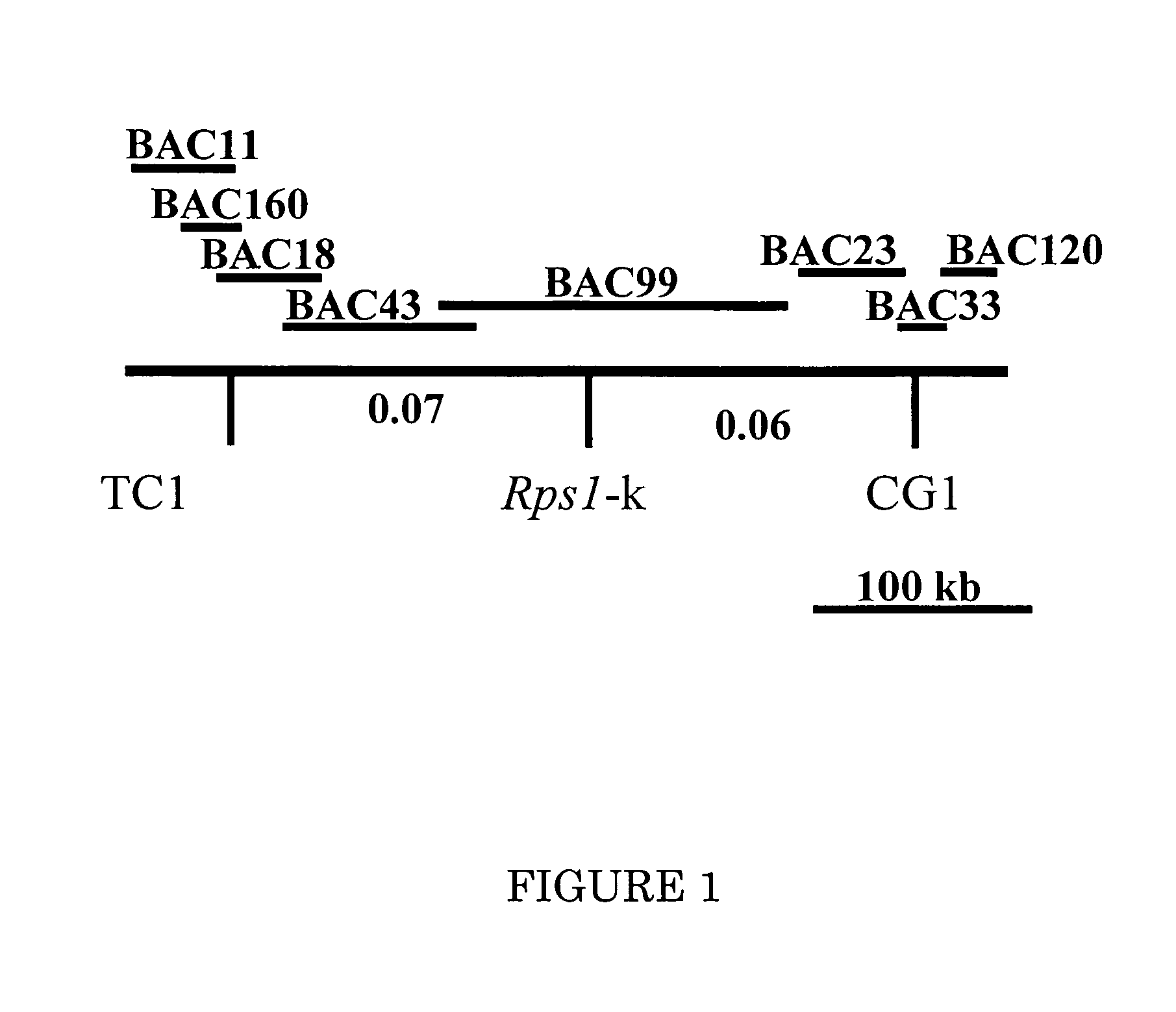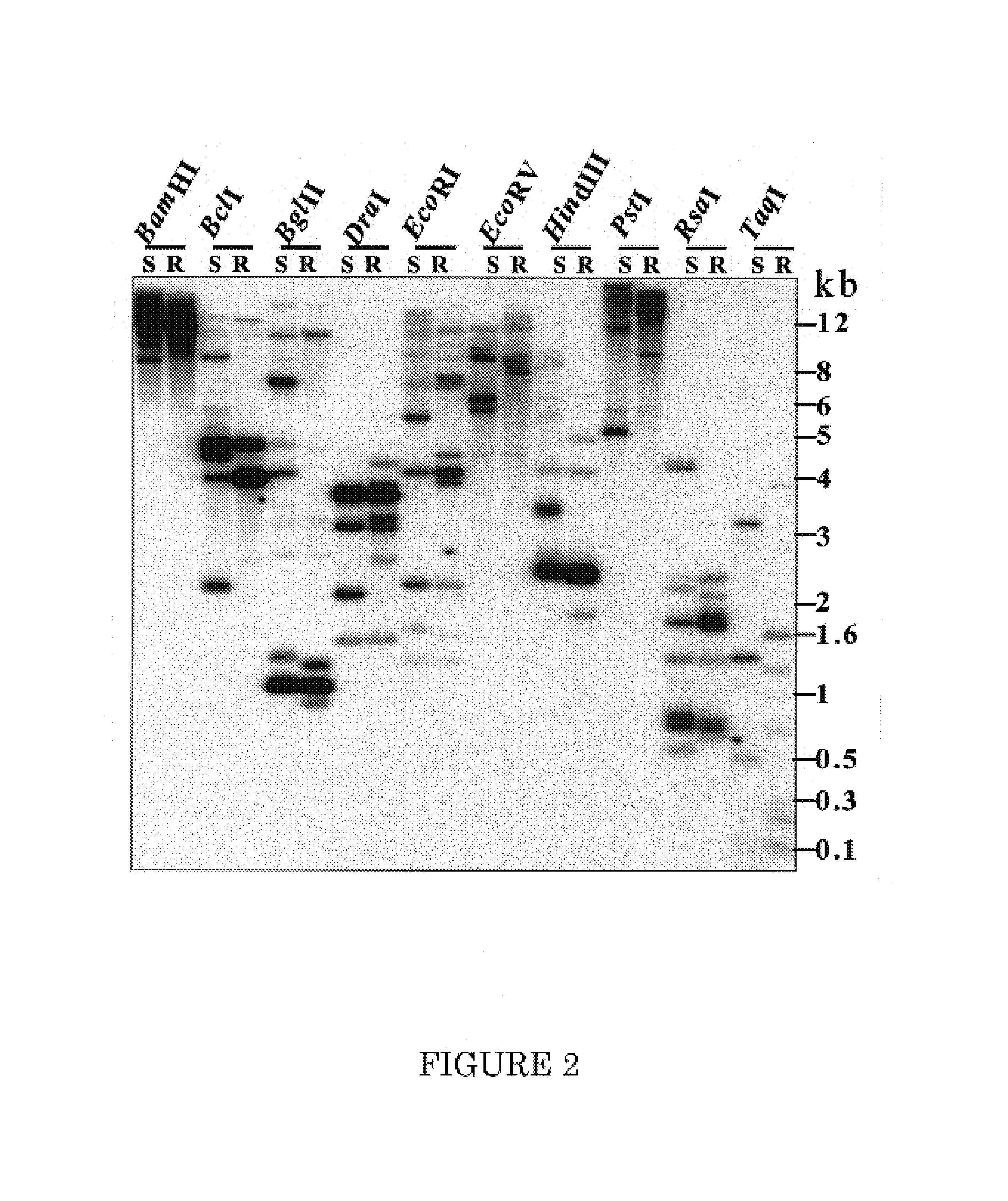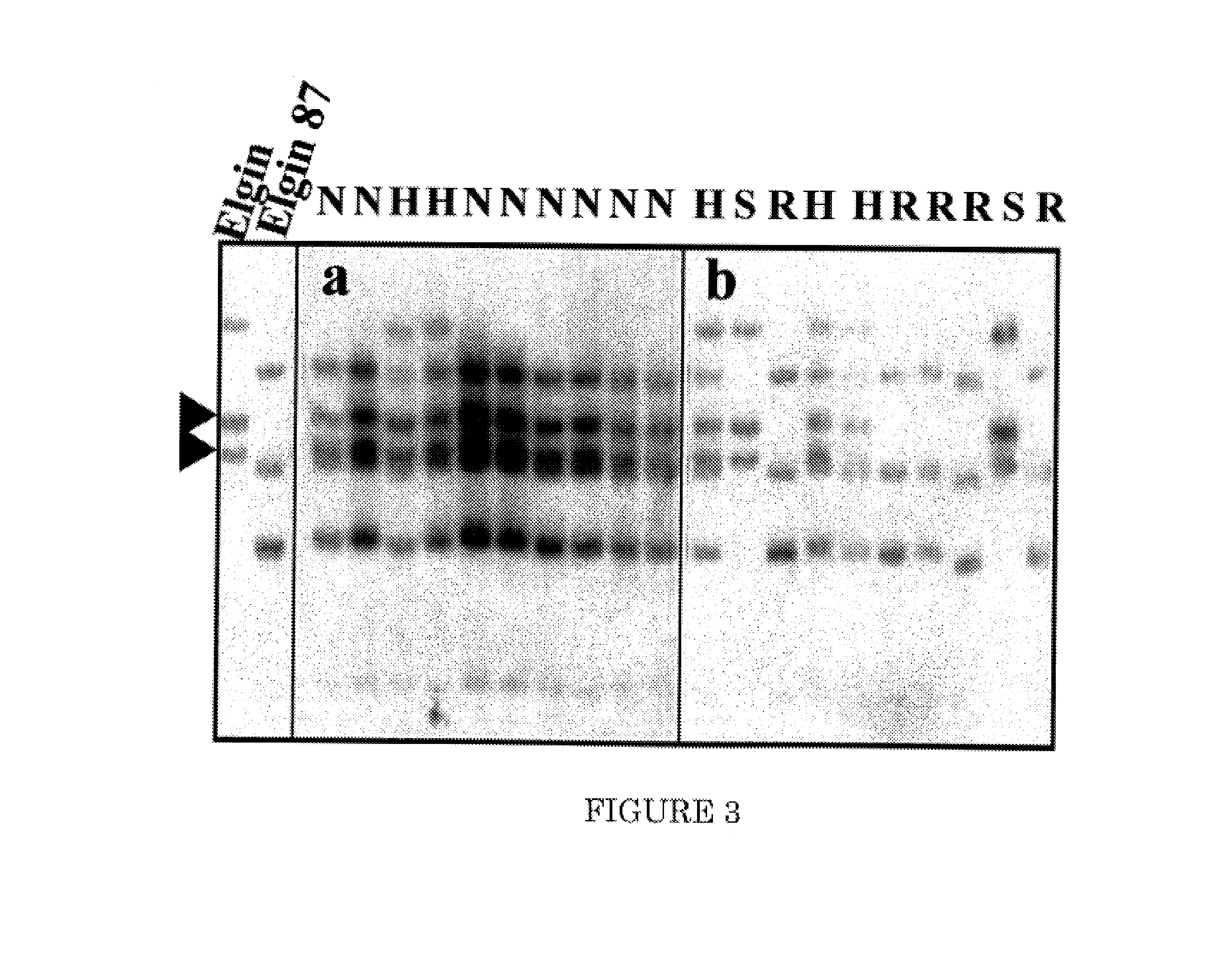RPSk-1 gene family, nucleotide sequences and uses thereof
a technology of rpsk-1 and resistance genes, applied in the field of purified and isolated family of rpsk-1 resistance genes, can solve the problems of limited understanding progress, resistance available in the present day cultivars might not be effective in controlling the disease in the future, and pathogens present a major problem for soybean growers, and achieves high expression of recombinant molecules, easy assay, and additional evidence of homozygosity
- Summary
- Abstract
- Description
- Claims
- Application Information
AI Technical Summary
Benefits of technology
Problems solved by technology
Method used
Image
Examples
example 1
Materials and Methods
[0134]Growing of soybean and Phytophthora sojae: inoculation and disease scoring: Soybean seedlings were grown under light conditions for two weeks (Bhattacharyya and Ward, 1986). P. sojae race 1 was grown in the dark at 22° C. and zoospores were obtained from 6-day-old cultures (Ward et al., 1979). Segregating materials from the cross between the pair of near-isogenic lines (NILs) ‘Elgin’ and ‘Elgin 87’ were tested for their responses to P. sojae race 1 by inoculating detached leaves with zoospores suspensions (Bhattacharyya and Ward, 1986). Unifoliate leaves of two-week-old F2 seedlings were detached and placed in Petri plates carrying Whatman filter papers moistened in 10 ml water. Petioles of leaves were kept under a film of water and leaf blades were inoculated with drops of 10 μl zoospores suspensions carrying about 1000 zoospores. The infected leaves were scored for disease development 3 and 5 day following inoculation. Susceptible responses are character...
example 2
Materials and Methods
[0204]Subcloning and sequencing of BAC clones: Three overlapping BAC clones, BAC18, BAC43 and BAC99 carrying the Rps1-k locus were sequenced using a shot-gun approach. To minimize E. coli DNA contamination, DNA of the three BAC clones was prepared with Qiagen Large Construct Kit (Qiagen, Valencia, Calif.). Two shotgun libraries for each BAC clones were constructed. One library was made using Topo shotgun subcloning kit (Invitrogen, Carlsbad, Calif.). Briefly, individual BAC DNA was nebulized under 5 psi for 10 seconds. Fragments of 5 to 10 kb were blunt-ended, dephosphorylated and ligated to vector pCR4BluntTOPO. For the other library, DNA of each BAC was partially digested with Sau3AI, DNA fragments around 20 kb were purified and then ligated into the dephosphorylated BamHI restriction site of the binary vector pTF101.1 (refer these clones to pTF101.1 clones). Colonies were picked randomly and stored in 96-well microtiter plates. Plasmid DNA was prepared applyi...
example 3
[0261]Recognition in Disease resistance: Several plant disease resistance genes that follow the classical gene-for-gene hypothesis (Flor, 1955) have been cloned. These genes can be classified into four major groups based on the structures of their protein products: (i) proteins with kinase activity, e.g., Pto and Rpg1 (Martin et al., 1993; Brueggeman et al., 2002); (ii) proteins with nucleotide binding sites (NBS) and leucine rich repeat regions (LRR), e.g., RPS2, N, L6, RPM1, Prf, M, 12, and RPP5 (Anderson et al., 1997; Bent et al., 1994; Grant et al., 1995; Lawrence et al., 1995; Mindrinos et al., 1994; Ori et al., 1997; Parker et al., 1997; Salmeron et al., 1996; Whitham et al., 1994); (iii) proteins with leucine-rich repeat regions and a transmembrane domain, e.g., Cf2, Cf4, and Cf9 (Dixon et al., 1996; Jones et al., 1994; Thomas et al., 1997) and (iv) proteins with leucine-rich repeat regions, a transmembrane, and serine / threonine kinase domains, e.g., Xa21 (Song et al., 1995)....
PUM
| Property | Measurement | Unit |
|---|---|---|
| disease resistance | aaaaa | aaaaa |
| nucleic acid | aaaaa | aaaaa |
| resistance | aaaaa | aaaaa |
Abstract
Description
Claims
Application Information
 Login to View More
Login to View More - R&D
- Intellectual Property
- Life Sciences
- Materials
- Tech Scout
- Unparalleled Data Quality
- Higher Quality Content
- 60% Fewer Hallucinations
Browse by: Latest US Patents, China's latest patents, Technical Efficacy Thesaurus, Application Domain, Technology Topic, Popular Technical Reports.
© 2025 PatSnap. All rights reserved.Legal|Privacy policy|Modern Slavery Act Transparency Statement|Sitemap|About US| Contact US: help@patsnap.com



